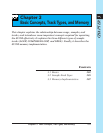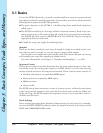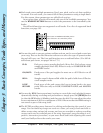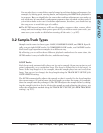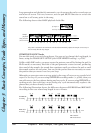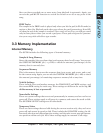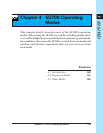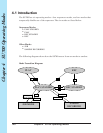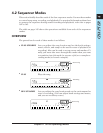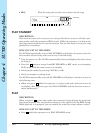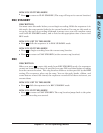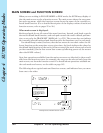
Chapter 3
Basic Concepts, Track Types, and Memory
137
CHAPTER 3
Once you have recorded one or more notes, loop playback is automatic. Again, you
can use the pad MUTE function to switch the sound on or off at any point in the
song.
FREE Tracks
The sample in the FREE track is played only when you hit the pad (in PLAY mode) to
register a Note On. Playback ends when you release the pad (generating a Note Off)
or when the end of the sample is reached. These tracks do not loop; you will get sound
only in those places where you record a pad press. These pads are great for punctua-
tion your song with odd effect-type sounds.
3.3 Memory Implementation
Internal Memory
The SU700 includes the following types of internal memory.
Sample & Song Memory
Stores the samples (the waveform data) and sequence data for all songs. You can use
the SYSTEM | MEMORY job (→ p.309) to check the amount (percentage) of this
memory that is currently free.
Sequencer Memory
This is the memory that stores the sequence data (note events, pad events, and so on)
for the current song. Again, you can use the SYSTEM | MEMORY job (→00) to check
the amount (percentage) of remaining sequencer memory left at any time.
Volatile Settings
These include scene and marker memory, the TRACK SET and MIDI settings, and
the current BPM setting for each song. These settings are different for each song. All
of this memory is lost at power-off.
Nonvolatile Settings
These are system settings that are stored permanently in memory and are not lost at
power-off. These settings apply to all songs in common, and cannot be saved to disk.
The SYSTEM | SETUP settings are all nonvolatile.
Temporary States
These are state settings that are held during the current session only; they are lost at
power-off and cannot be saved to disk. These include the QUANTIZE setting, the rib-
bon track selection and ribbon-function setting, and the most recent page and param-
eter position within each job. All of these settings apply in common to all songs.





